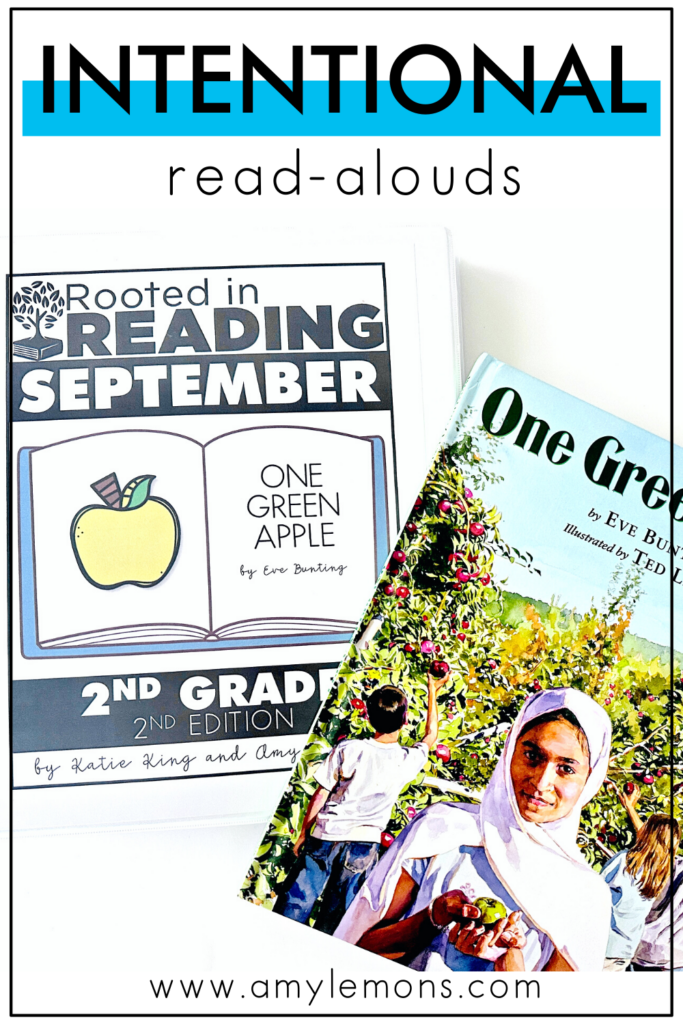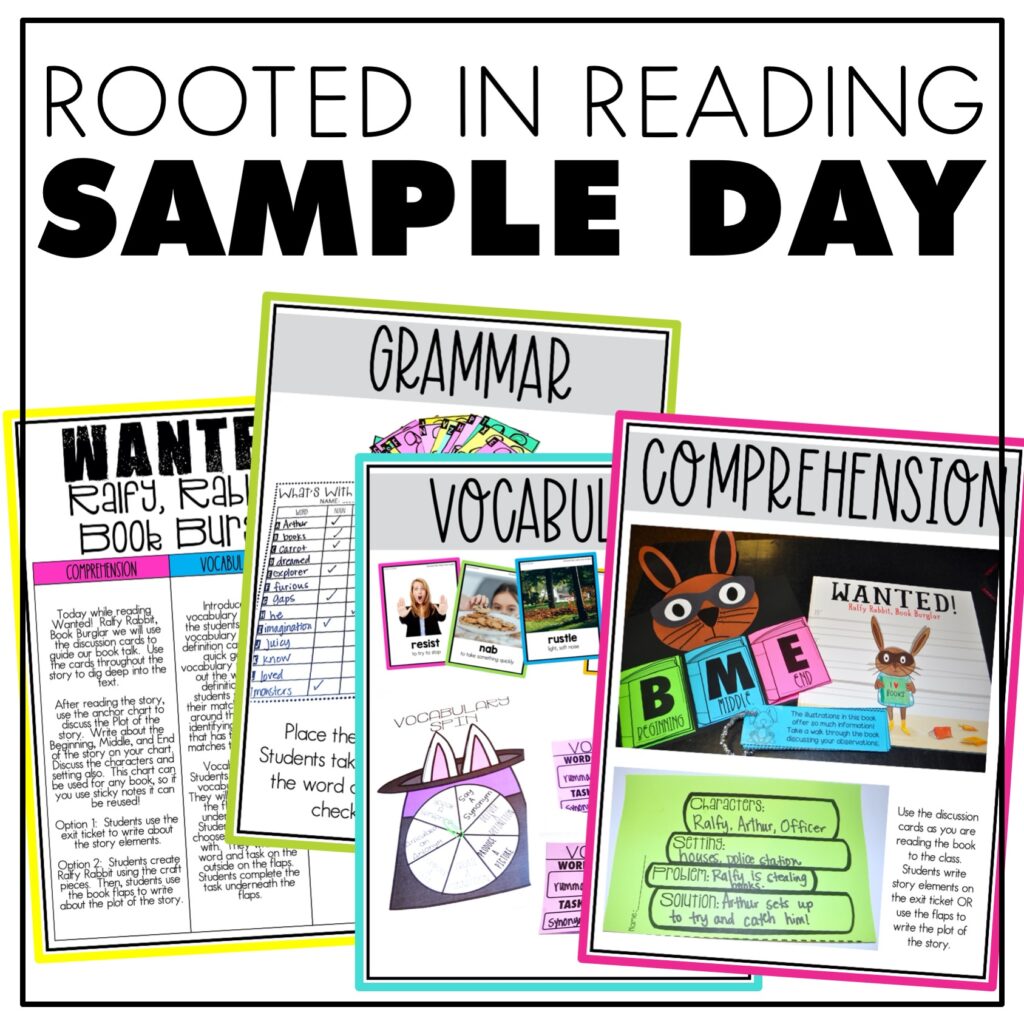

Intentional reading is the backbone of a successful reading lesson. Not only should you be strategic about ensuring you have the right mix of diverse books, but you should also incorporate the necessary components to make your intentional read-aloud transform your ELA instruction.
An intentional read-aloud occurs when the teacher reads aloud a text with a specific purpose in mind. The purpose may be to model expression, introduce a genre, teach a specific comprehension skill, etc.
The teacher pauses throughout the read-aloud to ask questions, clarify vocabulary, or make predictions. The goal is to engage the students in active listening and promote a deeper understanding of the text.
It’s important to clarify your purpose as you’re searching for books. You’ll be able to intentionally choose read-alouds that provide the best angle for what you’re trying to teach.
Then, you can choose accompanying activities to help drive that purpose.
One of the major components of an intentional reading is pausing to discuss the story with students before, during, and after the reading. We do this to model thinking aloud, to discuss our understanding of the text, and to point out specific parts of the book that we want students to notice.
That makes it important to prepare questions in advance to pull out the intentions behind the read-aloud. When you plan questions ahead of time, you’ll find several direct benefits.
You can use book question cards to:
It’s a handy way to keep the discussion going and ensure the intentions of the read-aloud are made apparent.
Why is vocabulary important to intentional reading?
Students with limited language exposure are using conversational language rather than academic language. Vocabulary ties everything together.
When we understand the meaning of the words IN the text, we understand the text better. Being intentional about the vocabulary allows comprehension of the text to be accessible to all students.
There are several teaching strategies for vocabulary you can use to make it an easier process. Some of those include:
Students can respond to journal prompts or play games with words to experience enjoyment during vocabulary!
When we teach ELA skills through skill and drill, it is almost impossible to pull in all the previous knowledge in an engaging and timely manner. Picture books allow us to accomplish what we need to in our instruction while allowing students to enjoy the process.
As we are reading the story and targeting specific skills, we are engaging students in a deeper understanding of the text. We revisit the story, reread the text, and respond in a meaningful way.
One way to model thinking deeply about the text is by creating a whole-class anchor chart that can be used throughout the reading of a story. Build the chart together so that students see not only the teacher modeling their thinking, but they hear other classmates do this as well.
As conversations are had, students gain a deeper understanding of the book that was read aloud!
Another way to do this is to have students respond to a text using a graphic organizer or printable. This holds students accountable, gives them a chance to explain their thinking, and provides practice for citing text evidence.
Choosing intentional read-alouds will help set your reading lessons up for success and increase overall reading comprehension in your classroom.

Hey, y’all! My name is Amy Lemons and I am passionate about providing students with both engaging and effective standards-based Math and ELA lessons.

Sample a day of Rooted in Reading with these lesson plans and activities for Reading Comprehension, Vocabulary, and Grammar!


